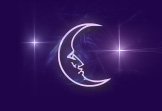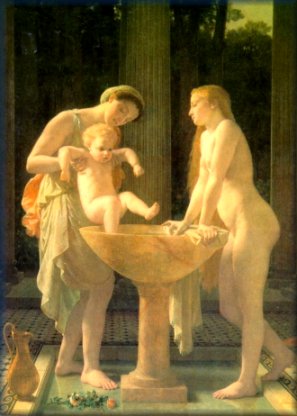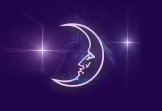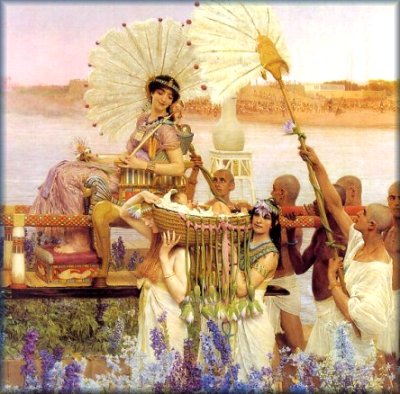An Ancient Egyptian Woman's Herb Plant Pharmacopoeia
In her benevolence, the goddess Isis (along with goddesses Bastet and Sekhmet) has bestowed the knowledge of these magical fruits and herbal preparations upon us, the healers who serve as representatives of the healing Netjeru. Please use these healing agents with the respect and reverence they are due and always give thanks to Isis, Bast, and Sekhmet when making and using these preparations so that these herbs will work their magic fully for you as well.
When to be taken internally, make a decoction from fresh or dried ingredients by bringing a pot of clean, fresh water to boiling then removing it from heat. Put the herbal ingredients into the hot water and then cover and allow the herbal mixture to steep for a half hour or more until the decoction has cooled sufficiently to drink easily. If the decoction is too bitter to drink, add honey to taste (if available).
Always make a weaker decoction for treating children and babies. Where noted, some of these medicinal ingredients are to be crushed or mashed, wetted and applied as a poultice over the affected area.
Acacia Nuts: Rich in Tannic Acid, crush the nuts to make a decoction to dispel intestinal worms. Used on the skin as a wash, it treats skin rashes and irritations. Used in wash water, it is affective toward discouraging dust mites and fleas and lice from proliferating in homes, bed linens and on the body.
Aloe Vera: Squeeze out the juice from the leaves. The raw juice taken internally is good for dispelling certain kinds of intestinal worms as well as for healing the bowels and stomach ulcers. Good used topically to heal, burns, cuts, and scrapes on the skin. Has a soothing, cooling affect on all skin irritations. Good for treating bee and wasp stings by applying the fresh leaf sap directly onto the affected area.
Aniseed: Good used as a flavoring in cooking, Aniseeds also reduce bad breath and digestive complaints when chewed and swallowed whole or used in a decoction from the crushed seeds.
Balsam Apple (Apple of Jerusalem): Good used as a laxative and for healing allergic skin reactions. Can be used to treat Asthma and other weaknesses of the lungs and immune system as it acts on strengthening lung and liver function.
Basil: Good for strengthening the heart and helping to increase blood flow in the body.
Bayberry: Soothing internally to treat diarrhea, ulcers and hemorrhoids. Used externally to repel flies and mosquitoes.
Belladonna: Use with extreme caution. Relieves pain and induces sleep, but in strong doses can act as a poison and cause unconsciousness, paralysis and death.
Camphor: Soothing as an inhalant to treat colds, asthma, bronchitis and influenza. Used in a cream on the skin, can soothe sore muscles.
Caraway: Good as a food seasoning and for treating the affects of over indulgence in food, such as bad breath, flatulence and other digestive discomforts. The seeds are put in heated milk or water then cooled to room temperature and strained out and the resulting liquid is used to treat colic in babies as well as the aforementioned maladies of the human body.
Cardamom: Good as a flavoring in foods, Cardamom can also aid in digestion and decrease intestinal disruptions and flatulence.
Carob: Used in cooking, aides also in relieving digestive upsets and sour stomach.
Castor Oil: Good internally to relieve constipation. Used externally to sooth irritated skin and treat stretch marks. Has strong drawing properties and will remove impurities and toxic wastes from the skin when used in a poultice.
Cinnamon: The bark of this tree is used as a seasoning for meats, stews and desserts. Cinnamon is also a wonderfully gentle and effective healing agent that can be used medicinally to treat diarrhea, vomiting and nausea. It is also good to reduce flatulence and intestinal complaints such as colic in babies.
Colchicum: Common names for this herb include "Meadow Saffron." It can be used to reduce external swellings and aching joints due to rheumatism.
Coriander: Tiny seeds used as a spice in foods, Coriander is also a good stomach and intestinal tonic that gently helps to expel excess gas from the bowels and is very strengthening to the heart.
Cubeb Pepper: The dried, unripe berries are a culinary seasoning also used to treat various internal infections such as those of the gums, throat, larynx, bladder and urinary tract.
Cumin: A common pot herb, Cumin is also good used in medicine to treat various internal maladies such as flatulence, stomach aches, and intestinal pain.
Dates: The fruit of the Date tree is a popular food in Egypt and a delicious wine is made from the fermented fruit. Dates and their wine can also aid in healing. The wine makes a good antiseptic to cleanse wounds. Old wine that has fermented into vinegar makes a good treatment for sunburn. The mashed fruits make a soothing poultice to place over swellings and bruises.
Dill: Excellent used in soups and stews as a seasoning, Dill is also a good laxative and diuretic. It also reduces flatulence and relieves upset stomach.
Figs: The fruit as well of the leaves of the Fig tree have been used extensively in healing, probably since the dawn of herbal medical science where fig trees grow naturally. The white sap taken from unripe Fig fruits is used to treat external sores and boils and to quickly remove warts. A tea from fig leaves has been used internally to treat insect stings, halitosis, sore throat and hoarseness, asthma, bronchitis, spasms and convulsions.
Fenugreek: A herb used as a spice and as a general tonic for the body that reduces internal swelling and discomfort in the liver, pancreas, stomach and lungs.
Frankincense: Inhaled as a burned incense, can aid in reducing nasal congestion and in calming the mind and body to induce deep meditative healing states. Used internally, can soothe sore throats and asthma as well as stop bleeding and vomiting.
Garlic: Used as an excellent seasoning in food, Garlic has antibiotic and antiseptic properties that make it useful for treating all external and internal bacterial infections and in killing harmful intestinal bacteria. (Though the Ancient Egyptians did not know of the concept of microscopic bacteria as a cause of disease, they did successfully employ garlic to treat the affects of infections. Infections were viewed as an affliction of "invisible, evil spirits" upon the body.) Garlic is also considered a good tonic food that increases the physical vitality and strength of those who eat it daily.
Hemp (Cannabis): Burned and inhaled or used in a tea to ease convulsions, soothe headaches, and treat asthma and bronchitis.
Henna: The powdered bark is commonly used as a paste painted onto the body with a sharp stick to create patterns on hands, breasts, feet, and face, women also used it to dye their hair. Used as a hair dye, it added great shine and deep red highlights to it. It was also used to dye fabrics shades of red, brown and yellow. The leaves of the henna plant could be used internally to treat headaches, sore throat, diarrhea and as a poultice to close and heal open wounds.
Holly: The leaves and berries of this poisonous plant were used inappropriately to stimulate uterine contractions leading to miscarriage. If given in too strong a dose, besides causing miscarriage accompanied with severe nausea and vomiting, it could also kill the woman trying to rid herself of an unwanted pregnancy through convulsions, coma, and uncontrolled internal hemorrhaging.
Honey: Though not a fruit or herb, Honey is a food sweetener that can also aid in healing. Good used externally as a beauty aid to nourish and soothe skin on the face and body, honey also could be used on open wounds to reduce infection (by killing bacteria). Honey also speeds healing by nourishing the skin cells surrounding the wound. A poultice containing honey had to be kept covered with cloth to discourage flies.
Juniper Berries: The tea made from these dried berries is an excellent treatment for kidney, bladder, and prostrate troubles. Used as a douche it can treat certain venereal diseases. A strong tea made from this berry can also cause powerful uterine contractions causing vaginal bleeding and miscarriage and should therefore not be used to treat pregnant women.
Lotus (Latin: "Nymphaea caerulea and Nymphaea lotos" ie: Egyptian Water Lilies): The flower most often identified as the Lotus blossom in Ancient Egypt was actually a variety of Water Lily native to the Egyptian Nile River that came in shades of blue or white. Egyptian Lotuses grow on tall stems above the water surface and have petals ending in a point, while the aquatic flower that is considered the true Lotus had rounded tipped flower petals. This flower called the True Lotus (Latin: Nelumbo nucifera) originated in Ancient Persia and was later popularized as the sacred Lotus used in Hindu and Buddhist rituals. Medicinally, the Egyptian Lotus (its roots, stems and leaves) found uses both as a culinary delight and starchy food staple as well as being used internally as a treatment for gastrointestinal disorders and jaundice. The Persian Lotus was introduced in Egypt much later in its history and was also used in medicine for its narcotic properties, most commonly applied as an anesthetic. Soaking the Persian Lotus flower petals or leaves in wine and then ingesting the extract also lent itself well as an aid in meditation and relaxation.
Licorice: Good used as a seasoning in foods, licorice also makes a sweet and enjoyable beverage when brewed as a tea. It also is a good breath freshener as well as a mild laxative and soother of intestinal complaints and flatulence. Licorice could also be used to expel phlegm and clear infection in and soothe the lungs. A good overall healing agent with tonic affects on a weakened body. Pregnant women should, however, not use it as it could stimulate premature labor.
Mustard: Besides being an excellent seasoning on foods, mustard could be used in a water bath or as a poultice to soothe aching joints and sore muscles. Used internally, mustard in large doses could induce vomiting and relieve chest pains.
Myrrh: Besides having a pleasant scent, Myrrh could be used internally to treat infection of the teeth and gums. It also could be used externally in a poultice to heal skin irritations and to reduce pain from headaches and backaches.
Olive: Both the fruit and the oil of the olive were used in cooking and could be used in healing as well. Olive oil was used as a wonderful moisturizing treatment for dry skin and hair and the mashed fruits and/or oil were used in poultices to help soothe and heal scrapes, wounds, burns and stretch marks. Used internally, olive oil could help in removing gallstones and cleansing and detoxifying the liver as well as in promoting luxurious hair growth, healthy skin and strong finger nails.
Onion: Besides being a valuable cooking vegetable, onions were used in medicine to prevent colds, soothe sciatica and back pain, and to increase blood circulation and induce perspiration.
Papyrus: See "Sedge."
Parsley: Besides being a common pot herb, parsley can be brewed in a strong decoction to make an excellent diuretic that is very nourishing to the kidneys and bladder. Used in conjunction with juniper berries, it can be even more effective as a tonic for the urinary tract.
Peppermint: An excellent seasoning in foods and as a breath freshener, Peppermint (and mint in general) was also good for alleviating vomiting, upset stomachs, flatulence, and other digestive complaints.
Pomegranates: A purported aphrodisiac food, Pomegranates were also thought to increase the fertility and sexual potency of the men and women who ate them.
Poppy: When crushed, the seeds of the flower produced a compound containing Opium (morphine). This was extremely useful internally to relieve all kinds of pain. It could also treat insomnia by inducing sleep and was very good externally to deaden pain and internally as a general anesthetic so that surgery could be performed.
Sandalwood: Used to scent incense, body oils and perfumes, Sandalwood is also good used internally to treat indigestion, diarrhea, headaches, and gout.
Sedge (Papyrus): Papyrus stems served to make a very strong and durable type of writing surface, but were also used by the clever Ancient Egyptians as a poultice to treat skin irritations and burns. Appreciated for their sweet flavor, papyrus roots and stems were also boiled or sautéed and eaten as a table vegetable in Ancient Egypt.
Sesame: A common flavorful additive to foods, sesame paste and sesame oil also have healing properties when used on the skin to treat irritations. Sesame is also good for treating the affects of asthma.
Tamarind: Used occasionally as a flavoring in food, Tamarind is also a good laxative.
Thyme: A versatile culinary herb, Thyme also can be used to reduce internal and external pain.
Tumeric: Used commonly as a strong yellow dye on fabrics, Turmeric is also good for strengthening the liver and stomach and aiding in digestion. Its healing and antiseptic properties make it good as a poultice to close and heal open wounds.
OOC note: This information is not intended to replace the advice of a doctor. While considered much gentler and safer than many over-the-counter drugs, herbs can have unexpected and even dangerous side effects and should only be used under the care of a trained herbalist or naturopathic physician. The author, having duly warned the reader, therefore assumes no legal responsibility for the affects of uneducated use of the aforementioned natural substances.






 To Seshat’s Per at Pan Historia
To Seshat’s Per at Pan Historia
